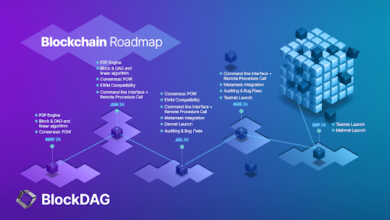Diversity and Inclusion in Technology Media: Breaking Barriers and Amplifying Voices

Introduction:
Diversity and inclusion have emerged as critical elements driving innovation and progress. The realm of technology media, in particular, is witnessing a transformative shift, breaking down barriers and amplifying voices that were once marginalized. This article explores the pivotal role of diversity and inclusion in technology media, shedding light on the benefits, challenges, and the relentless pursuit of a more inclusive future.
The Power of Diversity in Tech Media:
Diversity in technology media encompasses a broad spectrum of perspectives, backgrounds, and experiences. It goes beyond gender, race, and ethnicity, extending to differences in age, socioeconomic status, and cognitive styles. In a world that thrives on innovation, embracing diverse voices becomes a catalyst for creativity and problem-solving.
When technology media reflects a diverse range of narratives, it resonates with a wider audience. This inclusivity not only enriches the content but also opens up new markets and opportunities for growth. Companies that prioritize diversity and inclusion in their tech media initiatives are better positioned to understand and address the needs of a diverse global audience.
Breaking Barriers and Overcoming Challenges:
Despite the undeniable benefits of diversity, the technology media landscape has historically been marred by barriers that hinder inclusivity. Gender and racial disparities persist, limiting the representation of certain groups. However, industry leaders are increasingly recognizing the urgency of dismantling these barriers to create a more equitable playing field.
One significant challenge lies in fostering an environment where underrepresented voices feel heard and valued. This requires a concerted effort to address unconscious biases, promote equal opportunities, and implement inclusive policies. By breaking down these barriers, technology media can serve as a catalyst for social change, challenging stereotypes and promoting a more inclusive narrative.
Amplifying Voices Through Inclusive Storytelling:
Inclusive storytelling is a powerful tool for amplifying voices that have historically been marginalized in technology media. It involves deliberately seeking out and showcasing narratives that reflect the diversity of the global population. By doing so, technology media becomes a platform for empowerment, allowing individuals from all walks of life to see themselves represented in the digital realm.
Inclusive storytelling goes beyond tokenism; it involves a genuine commitment to understanding and accurately portraying diverse experiences. This not only resonates with audiences but also contributes to a more informed and empathetic society. As technology continues to shape the way we perceive the world, inclusive storytelling becomes instrumental in shaping a collective narrative that reflects the richness of human experience.
The Business Case for Diversity in Tech Media:
Beyond the ethical imperative, there is a compelling business case for diversity and inclusion in technology media. Diverse teams are more adept at addressing complex challenges, fostering innovation, and driving financial performance. Companies that prioritize diversity in their media strategies are better positioned to attract top talent, enhance their brand reputation, and tap into a broader consumer base.
The shift towards a more diverse and inclusive tech media landscape is not merely a response to societal expectations; it is a strategic imperative for businesses aiming to thrive in an increasingly competitive global market. By embracing diversity, companies can unlock a wealth of untapped potential, leading to a more resilient and forward-thinking industry.
Transcending Boundaries:
The Role of Technology in Driving Inclusion:
Technology itself plays a pivotal role in advancing diversity and inclusion in media. The digital age has democratized information, providing a platform for voices that were previously marginalized. Social media, blogs, and online platforms have become powerful tools for individuals to share their stories, connect with like-minded communities, and challenge mainstream narratives.
Moreover, technology enables targeted content delivery, allowing media organizations to tailor their messages to specific audiences. Personalized content fosters a sense of belonging and resonance, making individuals from diverse backgrounds feel seen and heard. As technology continues to evolve, its potential to amplify underrepresented voices in media becomes even more pronounced.
The Road Ahead:
Navigating the Path to Inclusive Tech Media:
While progress has been made, there is still much work to be done to achieve true diversity and inclusion in technology media. Organizations must adopt a holistic approach that encompasses recruitment practices, workplace culture, and media content creation. Investing in diversity training, mentorship programs, and establishing clear diversity goals are essential steps in this journey.
Collaboration across industry stakeholders is also crucial. By sharing best practices, insights, and resources, the technology media sector can collectively drive positive change. Embracing diversity as a core value requires ongoing commitment and a willingness to adapt to the evolving needs of a diverse workforce and audience.
Conclusion:
Diversity and inclusion in technology media are not just buzzwords but imperatives for a thriving and progressive industry. Breaking down barriers and amplifying voices from all walks of life is not only a moral obligation but a strategic advantage in an interconnected global landscape. As technology continues to shape our world, the narrative it weaves must reflect the diversity and richness of human experience. By embracing this challenge, the technology media sector can lead the way in creating a more inclusive, innovative, and equitable future for all.





